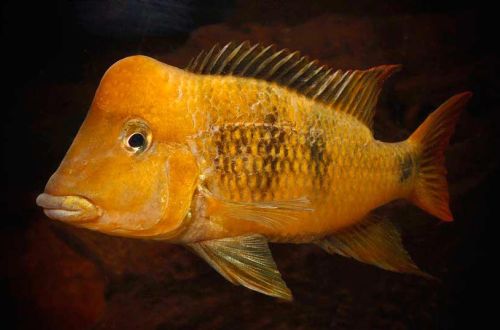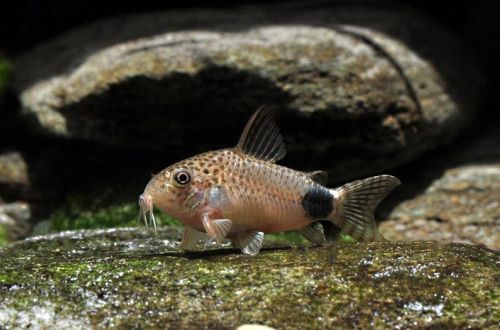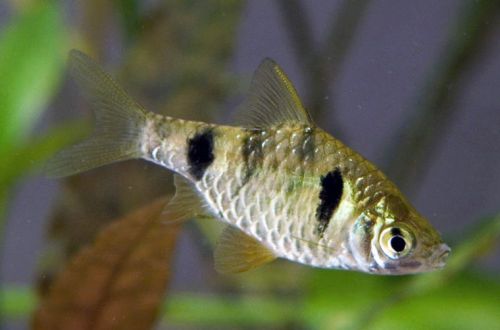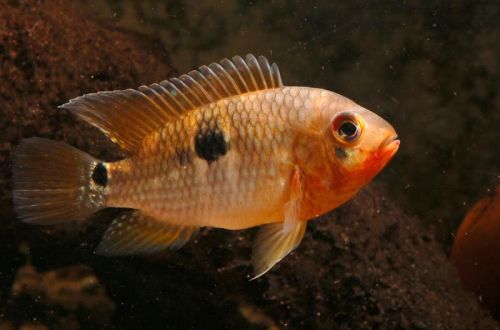
Akara reticulated
Reticulated akara, scientific name Aequidens tetramerus, belongs to the Cichlidae family. Relatively large fish with bright colors. Considered easy to keep and breed. Compatible with many other fish species. All this allows us to recommend it to beginner aquarists.

Contents
Habitat
Comes from South America. The natural habitat covers the vast expanses of the Amazon and Orinoco river basins in Brazil, Peru, Colombia, and Venezuela. The fish is found in both clear and turbid waters. It prefers shady areas of rivers with a large number of flooded snags, and a lot of aquatic plants grow along the banks, the bottom, as a rule, is covered with a layer of fallen leaves.
Brief information:
- The volume of the aquarium – from 250 liters.
- Temperature – 24-27°C
- Value pH — 4.5–7.5
- Water hardness – 1–21 dGH
- Substrate type – sandy
- Lighting – subdued
- Brackish water – no
- Water movement is weak
- The size of the fish is about 16 cm.
- Food – any food
- Temperament – conditionally peaceful, males do not get along well with each other
- Keeping in a small aquarium alone or in a pair of male / female
Description
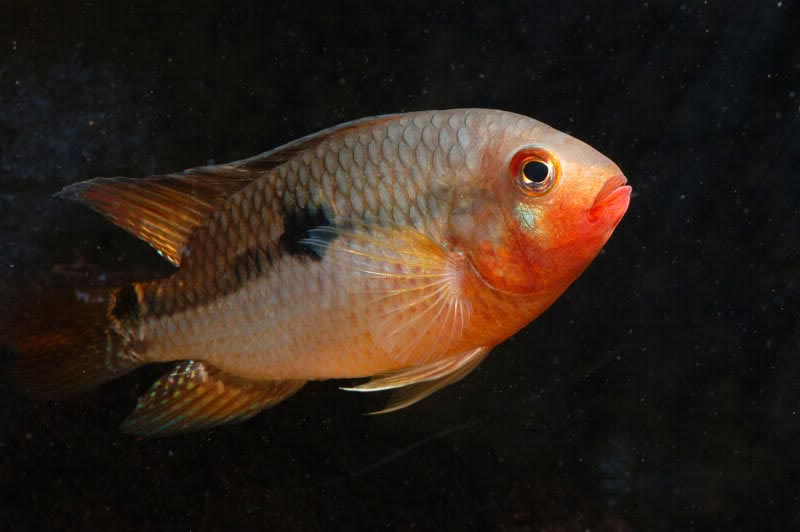
Adult individuals reach a length of up to 16 cm. The fish has a large massive body somewhat compressed from the sides. The largest fin is the dorsal, extending from head to tail. Sexual dimorphism is weakly expressed, males and females have slight differences.
Coloration varies from red to blue and depends on the specific region of origin. A characteristic feature of the body pattern are two large spots. The first is located in the middle of the body, the second at the base of the tail. Between them, a black stripe is barely visible, running along the lateral line.
Food
Omnivorous species. In the home aquarium, it will accept most popular aquarium fish foods. It can be dry flakes, granules, as well as frozen, live or freeze-dried bloodworms, brine shrimp, daphnia.
Maintenance and care, arrangement of the aquarium
The optimal tank sizes for one or two fish start at 250 liters. The design uses a soft substrate, several snags in the form of tree roots and branches, aquatic plants (if desired) and several large smooth stones, which later can become a place for spawning. The lighting is subdued.
The wide geography of distribution of Akara reticulata determined its ability to adapt to various conditions, first of all, this concerns the hydrochemical composition of water. It is able to live both in very soft and acidic, and in hard water. Before buying, you should find out in what conditions the fish are kept in order to recreate them in a home aquarium.
Successful management largely depends on maintaining a stable habitat without sudden changes in temperature, pH, dGH, or concentrations of nitrogen cycle products (ammonia, nitrite, nitrate). To do this, the aquarium is equipped with all the necessary equipment, at least a filtration and heating system, it is regularly cleaned, a part (about 50% of the volume) of water is replaced weekly with fresh water, etc.
Behavior and Compatibility
Refers to territorial species. Males occupy the territory and zealously protect it from rivals, so only one male can be in a small aquarium. The females are quite friendly. Often, the male and female form a permanent pair, which lasts for a long period. Able to get along with other types of fish in the presence of sufficient free space.
Breeding / breeding
Breeding is easy if a mature male/female pair is available. Otherwise, spawning is hardly possible. Pisces are very picky about the choice of a partner, so it is not enough to place sexually mature individuals of both sexes together to form a pair. A proven method is the acquisition of a group of young fish (at least six), which, as they grow older, will find themselves a worthy “life partner”.
With the onset of the mating season, the female lays several dozen eggs on some flat surface, usually a flat stone, and in its absence, the cleaned surface of a driftwood. During the entire incubation period and in the first weeks of the life of the fry, the female and male will protect their offspring, and only when they become large enough, parental instincts will weaken.
Fish diseases
The main cause of diseases lies in the conditions of detention, if they go beyond the permissible range, then immunity suppression inevitably occurs and the fish becomes susceptible to various infections that are inevitably present in the environment. If the first suspicions arise that the fish is sick, the first step is to check the water parameters and the presence of dangerous concentrations of nitrogen cycle products. Restoration of normal/suitable conditions often promotes healing. However, in some cases, medical treatment is indispensable. Read more about symptoms and treatments in the Aquarium Fish Diseases section.



